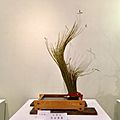Shōka facts for kids
Shōka (正嘉) was a special name for a period of time in Japan. It's like how we have years, but in old Japan, they also used "era names" or nengō (年号, ([nengō,] Error: {{nihongo}}: text has italic markup (help), lit. "year name")). The Shōka era came after the Kōgen era and before the Shōgen era.
This period started in March 1257 and ended in March 1259. During this time, the emperor of Japan was Go-Fukakusa-tennō (後深草天皇). He was the leader of the country during these years.
Key Events of the Shōka Era
What Happened in Japan?
- 1257 (Shōka 1): In this year, a big sickness spread across Japan. Many people got sick during this time.
More About This Time
- Kamakura period: The Shōka era was part of a larger historical period in Japan called the Kamakura period. This was a time when powerful warrior families ruled the country.
- You can learn more about the Japanese calendar and its history by visiting the National Diet Library's website: "The Japanese Calendar".
| Shōka | 1st | 2nd | 3rd |
|---|---|---|---|
| 1257 | 1258 | 1259 |
| Preceded by: Kōgen |
Era or nengō: Shōka |
Succeeded by: Shōgen |
Images for kids
-
Arrangement of the Saga Go-ryū in front of a hanging scroll in a tokonoma. The branch to the right shows the silhouette of Mount Fuji

All content from Kiddle encyclopedia articles (including the article images and facts) can be freely used under Attribution-ShareAlike license, unless stated otherwise. Cite this article:
Shōka Facts for Kids. Kiddle Encyclopedia.










